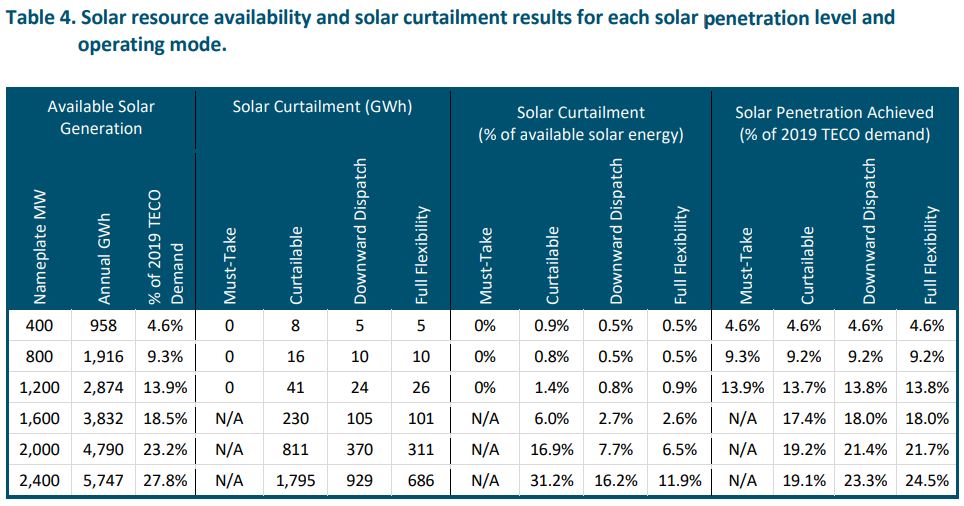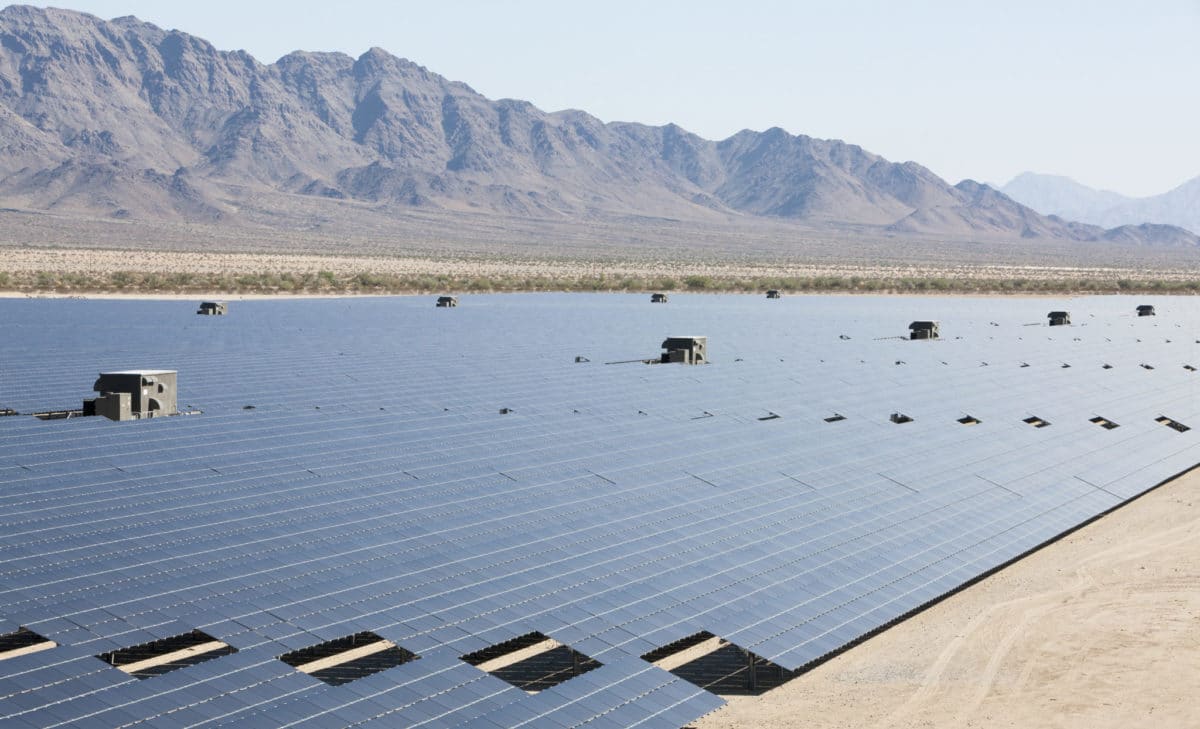An analysis, Investing the Economic Value of Flexible Solar Power Plant Operation, done by Energy+Environmental Economics, in cooperation with First Solar and Tampa Electric Company (TECO), found that adding increasing levels of flexibility can provide savings for rate payers while allowing significantly greater levels of solar penetration.
As seen in the chart below, this means moving from from the inflexible Must-Take mode into Curtailable and Downward Dispatch and finally Full Flexibility.

The above chart suggests that in the Must-Take scenario (where solar power will always run, and other hardware will pull back), solar power cannot be greater than 13.9% of the demand on TECO’s relatively isolated grid. As the greater levels of flexibility are added, the models show increasing penetration and total demand delivery. Having Full Flexibility would allow 2.4 GW of solar power to be installed (almost 28% of all demand) – and delivering greater than 24.5% of all electricity without changing the current power grid at all, or adding storage.

Additionally, as the flexibility increases – even with greater amounts of solar electricity not being produced to make room for less flexible resources – the savings for customers continues to increase as penetration levels increase toward 28%.
And of course, we have long known that solar power plants can do these things from a technical standpoint, and now it is clear that they can do so economically as well.
One analysis from Minnesota has suggested that oversizing solar power for winter power generation would be cheaper than either seasonal storage or gas, while a study in California at a First Solar power plant, along with National Renewable Energy Laboratory (NREL) and the California Independent System Operator (CAISO), tested a 300 MW utility scale photovoltaic power plant in California and found that the that utility-scale solar power plant could provide grid reliability services that are significantly better than fast-ramping gas turbine technologies.
The power plant was equipped with advanced power controls by combining multiple power-electronic inverters and advanced plant-level controls. The test demonstrated that PV plants can have the technical capabilities to provide grid services such as spinning reserves, load following, voltage support, ramping, frequency response, variability smoothing, frequency regulation, and power quality improvement.
This research of a large scale plant followed similar research in distributed solar in Hawaii making use of Enphase and SolarEdge hardware, also directed by NREL.
When we combine these thoughts and recognize that ‘inefficient’ over sizing of solar power, as is noted in Minnesota, is still better financially than gas or seasonal storage, then it becomes quite obvious that flexible, and efficient usage of solar power – even when we shut it off at times to let the fossils lumber – is going to dominate.
This content is protected by copyright and may not be reused. If you want to cooperate with us and would like to reuse some of our content, please contact: editors@pv-magazine.com.








Exactly where in Florida was that photograph taken?
California, Florida 🙂 (it’s a First Solar plant is why I grabbed)